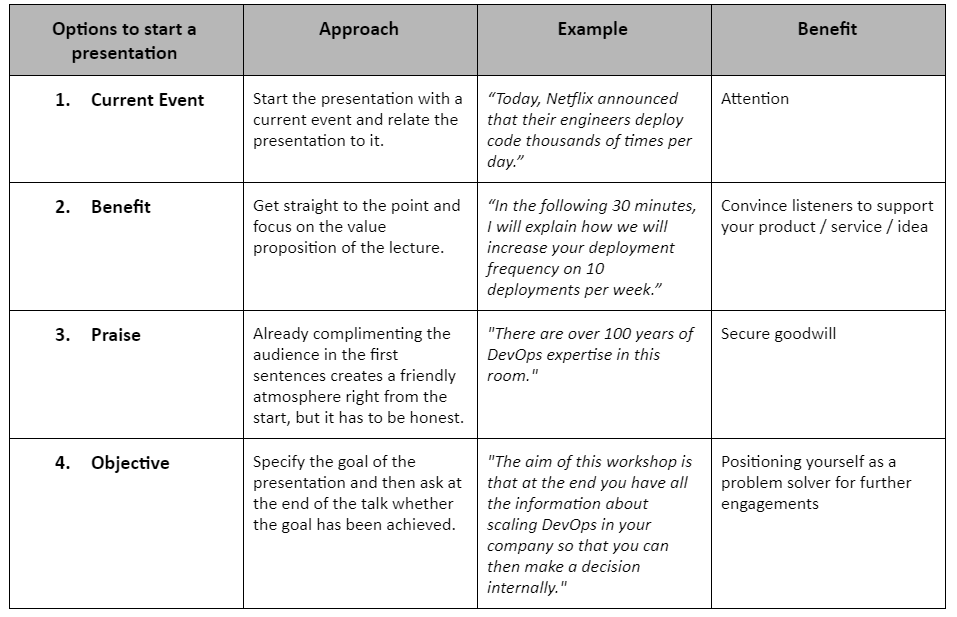Jumpstart your DevOps presentations: a toolkit for success
Most companies have already started with DevOps. Now they are scaling it up to an enterprise level. In this process, communication is key: communication to established teams, to your leadership and to late adopters with legacy technologies. Quite often some of them have to adjust their work, change established behavior and receive new responsibilities. How they hear about these changes sets the tone for the whole process.
Driving your presentation
These presentations are quite delicate. I failed at some of them in my past. When I examined what hadn’t worked, I saw that I just couldn’t get things started. It was like I was trying to take the audience somewhere but the engine kept turning over and over and the car never really got going. What I learned were a few tricks to jumpstart my presentations and get going powerfully from the start.
I had started the presentation but I had left the audience behind
I had prepared the content well. Each slide was worked out in detail: facts and numbers double and triple checked. But I had forgotten the audience. I missed connecting the people to the materials. And that has to be done at the beginning. Otherwise the audience has no idea where I am taking them.
The first minutes are so important, because in the first minutes, the audience decides on:
Is it worth listening to the presentation?
Is the speaker competent?
What is the quality of the presentation?
Therefore, I always structure my first minutes with the PIP formula, that's also easy to remember. PIP are all the points which should be mentioned at the start of a presentation:
Purpose: Why is this presentation being held? Why are we here today?
Importance: Why is it so important that we achieve this goal today? Why is the presentation important for the problem we have before us? Why is it so urgent?
Preview: How is the presentation structured? How long will it take?
Optimal is to follow up with a question:
"Is that also your understanding, are there other points that are important to you?"
Now I have my cheat sheet and four options for starting a presentation. For me this is extremely helpful, and I would like to share it here with you. I pull out my cheat sheet before each important presentation and update it with my learnings after the presentation.
Based on this structure, I use four patterns in my daily work. Depending on the situation I choose one of the following patterns:
Then I combine the pattern with the PIP formula, this can look like this:
Example: Today, Netflix announced that their engineers deploy code thousands of times per day.
In this presentation we discuss your roadmap to change from quarterly deployments to weekly. This is important because we have to catch up with your competition who are already rolling out new features on a daily basis. We have 30 min to discuss the details. At the end of the presentation we should all agree on the next steps and the here presented roadmap.
It looks simple, but from time to time I catch myself starting a presentation in the wrong way. It's mostly the case whenever I don’t have enough time to prepare, in combination with a stressful day.
Prepare your first three minutes to lower your stress when going into a presentation
My four options to start a presentation in combination with the PIP formula help me to activate my audience. This structure also raises my self confidence. In my rehearsal, I precisely define the first words and sentences and practice. For my audience, it's easier to follow because I give the direction at the start.
When you use this pattern, when you are at the steering wheel, you reach your objective faster. Your audience knows what to expect and why it is important right now. They feel like they are part of the presentation, that this presentation is particularly for them and that makes them special.

